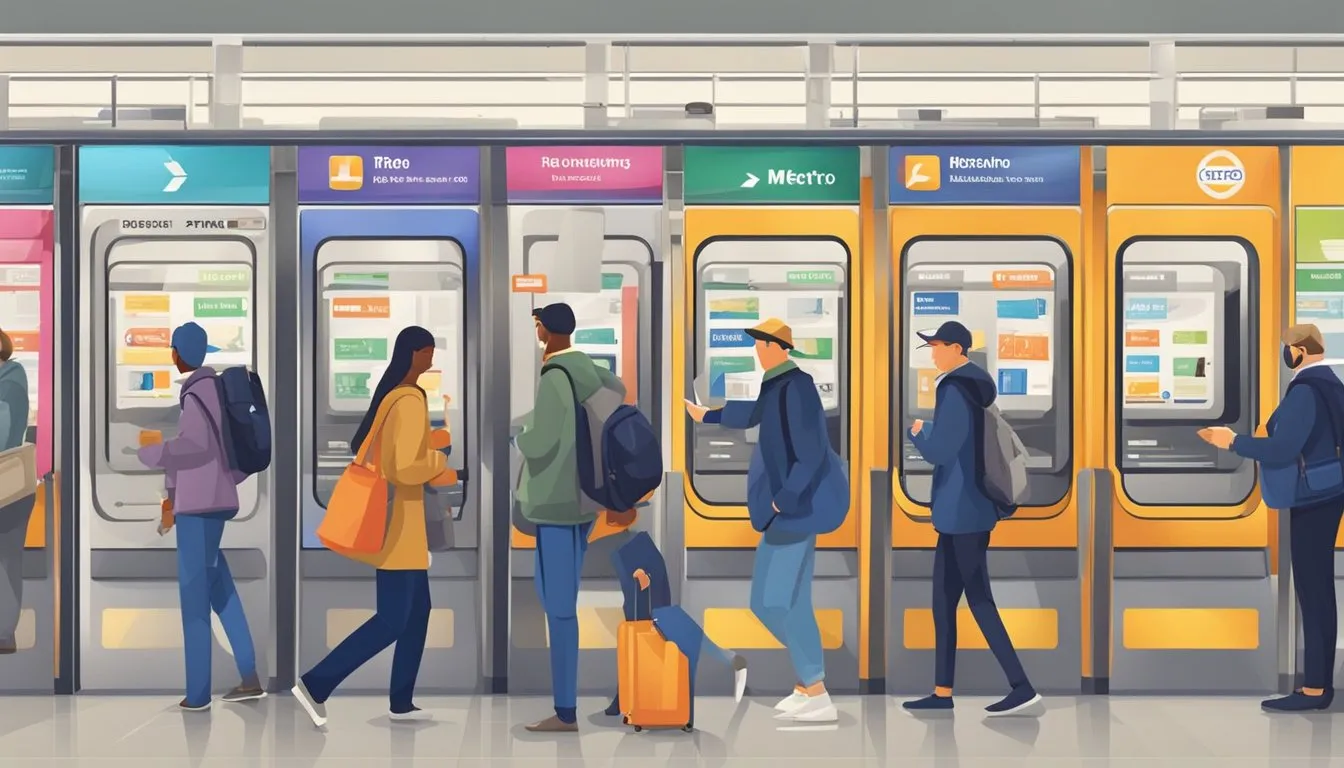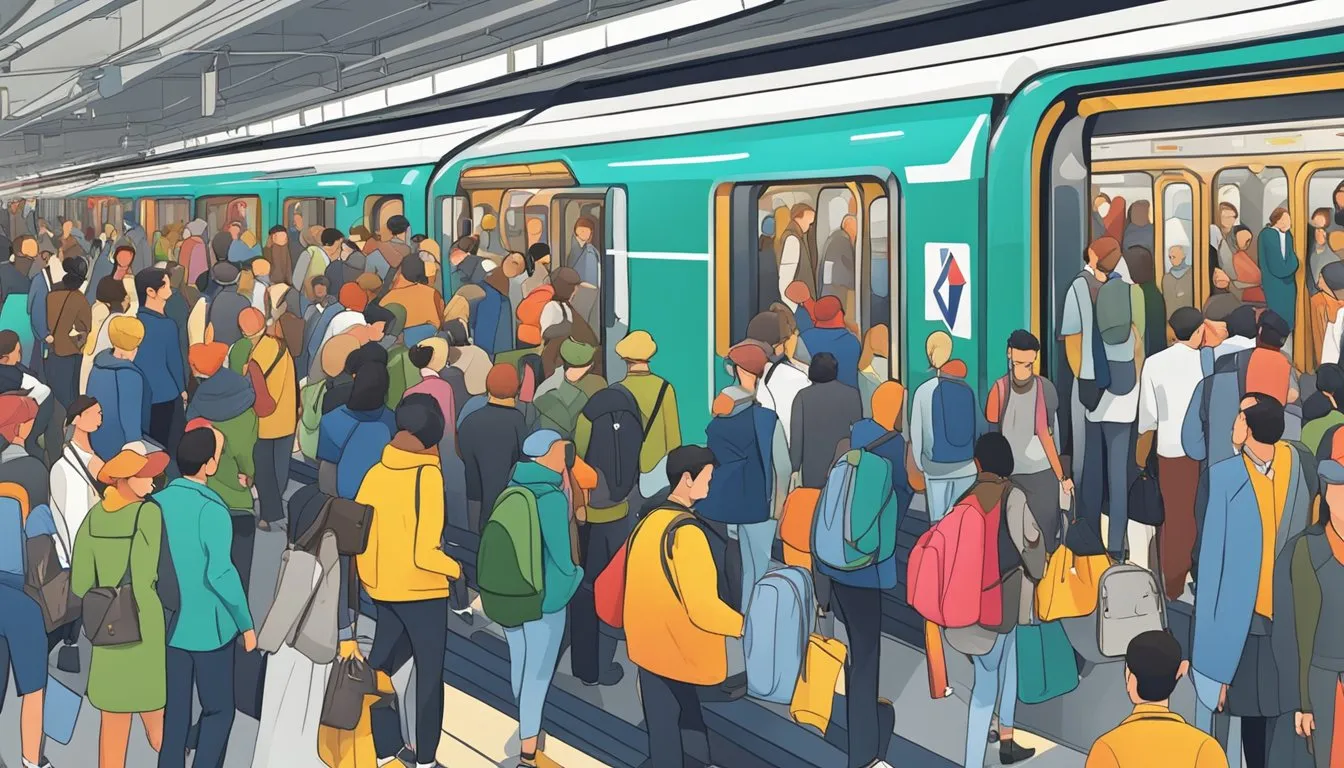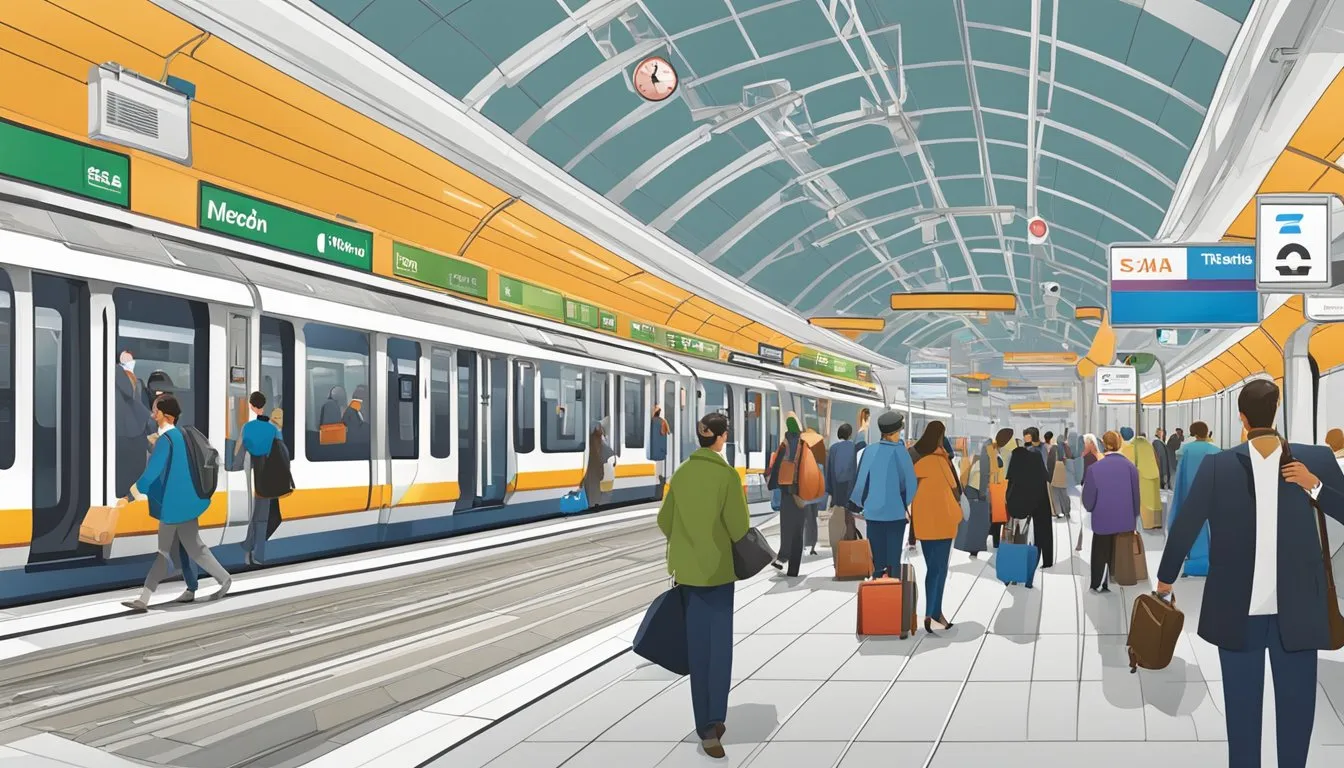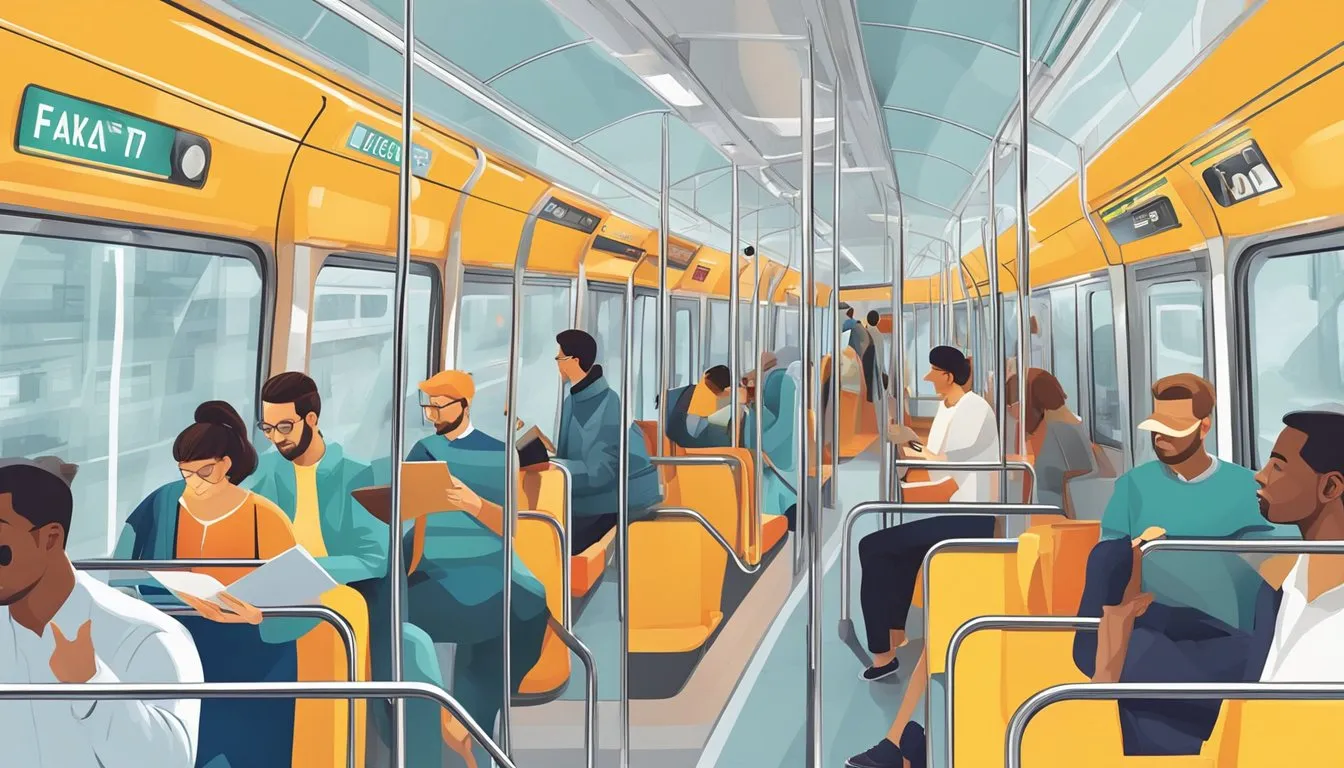Navigating through Milan’s bustling streets and attractions can be a seamless experience with the efficient metro system at the heart of the city’s public transport network. The city’s comprehensive metro lines, operated by ATM, Azienda Trasporti Milanesi, are designed to conveniently connect travelers to various destinations including historical landmarks, commercial areas, and Milan’s airports. Each metro line, identifiable by distinctive colors, services a specific route that covers an extensive part of the city and beyond, proving to be both a prompt and cost-effective mode of transportation for tourists and residents alike.

Understanding the ticketing and pricing structure is crucial for anyone looking to utilize Milan’s metro system. Options range from single-use tickets to travel cards, with discounted and group fares also available to cater to different travel needs. Additionally, the system boasts high accessibility and services, ensuring that stations and trains are equipped to assist passengers with mobility needs, and provide amenities that contribute to a comfortable journey. With integrated services that link metro lines to trams, buses, and regional trains, moving across Milan becomes an easy task, enhancing the urban travel experience.
Milan’s public transport
Key Takeaways
- Milan’s metro system is a convenient and economical option for city travel.
- A variety of ticket types cater to diverse travel requirements and durations.
- The metro network is accessible and well-integrated with other modes of transport.
History of Milan’s Public Transport

Milan’s public transport system has undergone significant transformations since its inception, evolving into a comprehensive network that serves millions. From the expansion of the tram system to the birth and growth of the Metropolitana, each step has contributed to the city’s mobility and the fabric of Italian public life.
Evolution of the Tram System
The tram system in Milan has been a staple of the city’s public transport for over a century. Initial horse-drawn trams appeared in the 1870s, but by the early 1900s, the system had electrified, increasing its capacity and efficiency. Today’s network extends to various parts of the city and is notable for its classic 1920s tram vehicles still in operation, which have become a historic symbol of Milan.
The modernization over the years has integrated more advanced tram cars, yet these traditional trams continue to be a cherished part of the Milan’s public transport options, especially among tourists.
The Development of the Milan Metro
The Milan Metro, known as the Metropolitana, is a relatively recent development in the historic context of Milanese public transport. Planning began in the 1950s with the actual construction starting in 1957. The first line, M1, opened in 1964, just in time for the influx of visitors to the Duomo area for the Christmas season.
The subsequent expansion has seen the metro grow into a large network with multiple lines, connecting key areas of the city with both residential and commercial districts. The Milan Metro is Italy’s largest metro system in terms of length and ranks among the most extensive in Europe. It’s recognized not just as a means of transport, but as an integral part of Milan’s urban development and identity.
Navigating the Milan Metro
With a comprehensive network of lines and stations, the Milan Metro is an efficient way for travelers and locals alike to traverse the city. Understanding the metro map and its lines is essential to make the most out of your journeys through Milan.
Understanding the Metro Map
The Milan Metro map is a vital tool for navigating the city’s subway system. It clearly delineates the various metro lines – M1 (red), M2 (green), M3 (yellow), M4 (blue), and M5 (lilac) – each identified by distinct colors for easy recognition. Users should familiarize themselves with the map to locate stations and understand the route options available. The system covers different zones of Milan with stops at key destinations facilitating access to popular areas like the Navigli canals.
Understanding the layout of the metro lines and direction of travel is fundamental. For instance, the M1 line splits in different directions at certain points, meaning passengers need to pay close attention to the train’s final destination to ensure they are on the correct service. It’s also essential to note that the M4 line is a new addition that connects Milan Linate Airport with the city center. More details on how the lines intersect and where they lead can be found by consulting the official Milan Metro map.
Metro Lines and Connectivity
Milan’s subway system is designed to be user-friendly, with clear signage showing the metro lines and their directions. The M1 line serves the city’s historical sites and major shopping areas, while the M2 line connects to Milan’s main railway stations like Garibaldi FS. The M3 line is useful for reaching the financial district and the bustling Duomo area. The M5 line conveniently takes passengers to the San Siro Stadium.
Each line has its own unique path, yet they are interconnected providing comprehensive coverage of Milan. Passengers must be aware of interchange stations where they can switch between lines to reach their destination. The new M4 line enhances this connectivity, especially for travelers to and from Linate Airport. For those looking to explore the Milanese lifestyle and the charming Canals of Navigli, the M2 line provides the closest stops. For detailed information on the routes and connections, travelers can refer to the Navigating Public Transport in Milan guide.
Ticketing and Pricing
Navigating Milan’s public transportation is efficient when you understand the ticketing system and pricing structure. Knowledge of the available tickets and passes as well as the methods for purchasing and using them ensures a smooth experience.
Types of Tickets and Passes
Milan offers a variety of ticket options to suit different travel needs. For short-term visitors, there are paper tickets that cover unlimited travel within specific time frames:
- Single ticket: Priced at €2.20, it offers 90 minutes of travel upon validation.
- 24-hour travel card: For €7.60, travelers can use all forms of public transport for 24 hours from the time of validation. Learn more about Milan’s 24-hour travel cards.
- 72-hour travel card: This pass costs €15.50 and is suitable for tourists on a longer stay.
- Three-day ticket: Priced at €13, it allows unlimited travel within specified zones for 72 hours. Details available on these three-day ticket options.
Purchasing and Using Tickets
Tickets can be bought from vending machines found in all metro stations, at ATM point sales, and at authorized retailers. To begin your journey:
- Purchase your ticket from either ticket machines or other vendors.
- Validate the ticket in the yellow machines found at entrances to metro platforms and on buses and trams.
Be aware that travelers must validate paper tickets immediately upon boarding to avoid fines. For more detailed guidance, please see how to use tickets in the Milan metro.
Remember, tickets and passes come in various forms and prices; choosing the right one will depend on the duration and frequency of your travel plans in Milan.
Accessibility and Services

Milan’s public transportation system places a high emphasis on accessibility, ensuring that facilities are in place to support travelers with disabilities, as well as offering a variety of additional services to enhance the travel experience for all passengers.
Facilities for the Disabled
Milan’s metro system prioritizes accessibility for individuals with disabilities, making it more convenient for wheelchair users and those requiring additional assistance. Most metro stations are equipped with elevators and stairlifts, facilitating floor-to-floor movement for travelers who cannot use the stairs. Many stations also have dedicated bathrooms for the disabled, ensuring comfort and respect for privacy. Clear signage is available to guide passengers towards these facilities.
Additional Services Offered
Beyond the basics, Milan’s metro system strives to cater to the needs of both locals and visitors. Passengers can find information points at major stations, offering assistance and travel information in multiple languages. For those in need of connectivity, many stations provide free Wi-Fi services, allowing passengers to stay connected while on the move. The metro system also has integrated technology that provides real-time updates on service and any potential disruptions, ensuring passengers are well-informed at all times.
To learn specifically about Milan’s efforts in providing ease of movement for everyone and their plan to improve it further, passengers can look into the accessibility features on the official ATM Milan Guide.
Integration with Other Transport
Milan’s public transport system ensures seamless transitions between different modes of travel, with effortless connections between metro services, buses, and trams. The integration encompasses the city’s airports too, linking them with the urban center and beyond.
Connection to Buses and Trams
The Milan subway system integrates smoothly with an extensive network of over 130 bus routes and 19 tram lines, facilitating transfers across the city. Major train stations in Milan, such as Centrale and Cadorna, serve as key interchange hubs where passengers can switch from subway to bus or tram services with convenience. This integration supports a cohesive travel experience for commuters and visitors alike.
Airport Links and Accessibility
Milan’s public transport network extends to both Linate and Malpensa airports, offering efficient connections for travelers. The M4 metro line directly connects Linate Airport with the city center, providing a swift option for airport transfers. Meanwhile, Malpensa Airport is accessible via the Malpensa Express train service, designed to accommodate both local passengers and international travelers with frequent departures from key locations like Cadorna and Centrale stations.
Tips and Recommendations

Navigating Milan’s metro system can be straightforward with a few well-chosen strategies and an understanding of key attractions accessible via this transport network.
Best Practices for Commuters
For regular commuters in Milan, purchasing a season ticket can be a cost-effective way to use the public transportation system. They should consider avoiding peak hours if possible, as trains can get crowded. Regular users of the metro could also benefit from the BikeMi bike-sharing service to complete the first or last mile of their journey.
Exploring Milan by Metro
Tourists can explore Milan efficiently by metro, which provides access to major attractions such as San Siro, Cairoli for Castello Sforzesco, and Piazza Duomo. First-timers are advised to carry a pocket map and familiarize themselves with a few basic Italian words to navigate the system confidently. When planning their visit to attractions, they should look up the nearest metro stop and check the timing beforehand through reliable transport guides like the Guide to Public Transportation or information on the latest metro line additions that connect to the city center such as the M4 Blue line.
Conclusion

Navigating the Milan metro system can be straightforward and reliable for both residents and visitors. Those unfamiliar with it may find that with a little orientation, they can travel through the city with ease. Milan’s comprehensive network covers key tourist attractions and business areas, making it a practical choice for various travel needs.
Travelers can purchase tickets using the ATM Milano app or at kiosks in stations, with full instructions available for first-time users. As they become more acquainted with the ticketing system, they will likely move through the city with confidence.
Public transport options are not limited to the metro, as Milan also offers a selection of bus and tram services that complement the subway lines. Integrating these services can optimize one’s travel itinerary, ensuring a seamless transit experience. With metro line M4 set to expand the existing infrastructure, the system’s capacity and reach will only improve.
For those looking to gain a deeper understanding of navigating Milan’s public transport, there are numerous online guides that provide valuable insights and tips.
In summary, the ability to use Milan’s transportation system effectively depends on a blend of knowledge and practical experience. As long as travelers are equipped with the right information and apps, getting around Milan can be efficient and even enjoyable.
Frequently Asked Questions

Navigating Milan’s public transport can be efficient and convenient with the right information at hand. Here are answers to some common queries that can help one travel with ease.
What are the different types of tickets available for Milan’s public transport system?
Milan offers various ticket options including single-journey tickets and passes for unlimited travel such as day passes, weekly passes, and monthly passes. Discounts are available for children, students, and senior citizens. Details can be found on Navigating Public Transport in Milan.
How can I purchase a public transport pass for traveling in Milan?
Passes can be purchased at metro stations, select newsstands, and ticket machines. One can also buy passes online through Azienda Trasporti Milanesi’s website, which operates Milan’s public transport.
What is the easiest way to navigate using the Milan Metro?
To navigate the Milan Metro system, check the line colors and maps at the stations. Make note of the direction of travel, which is often indicated by the last stop on the line. For comprehensive insights on using the metro, consider reading How to Use the Milan Metro.
Are there any mobile apps that can help with finding routes and buying tickets for Milan’s public transport?
Yes, the ATM Milano Official App assists with route planning and ticket purchases. The app, available for smartphones, streamlines the process of navigating the transport network. More details are available through Getting Around Milan.
Where can I find maps for Milan’s metro and tram systems?
Maps are available at all metro stations, and downloadable versions can be found on Azienda Trasporti Milanesi’s official website. The maps are essential for getting around and pinpointing metro and tram lines.
How does the contactless payment system work on Milan’s Metro and trams?
The contactless payment system allows passengers to pay using their contactless credit or debit cards. Tapping the card on the designated reader at turnstiles and onboard trams facilitates quick and secure payment for journeys.
